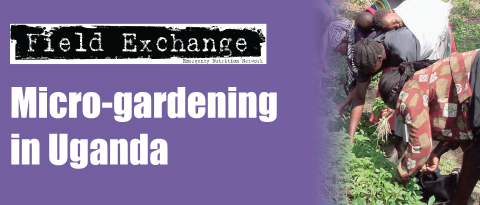Infant Feeding Patterns and Risk of Death
Summary of published paper1
Current WHO guidelines recommend that HIV positive mothers should avoid breastfeeding only if replacement feeding is acceptable, feasible, affordable, safe and sustainable, or to breastfeed exclusively but stop as early as possible. In the emergency context, meeting these criteria is particularly difficult, especially as HIV status of individual mothers is most likely unknown.The risk of virus transmission through breastfeeding depends on a variety of factors, including the disease status of the mother, whether she exclusively breastfeeds and for how long. Experts now estimate that on average, for each month of breastfeeding, less than 1% of infants are infected2. With exclusive breastfeeding, the risk drops to less than half this level. Any risk of MTCT through breastfeeding and excess morbidity and mortality associated with positive HIV status, needs to be balanced against the risk of excess morbidity and mortality by not breastfeeding, whether an infant is HIV positive or not. Work from South Africa found that HIV-positive infants who had never been breastfed suffered greater morbidity and mortality than HIV-positive infants who had been breastfed3. The paper summarised here helps to quantify the risks associated with infant feeding choice, and should help both health workers and mothers make an informed decision about infant feeding choice.(eds).
Arecently published paper describes a secondary analysis of data from a multicentre randomised controlled trial on immunisation-linked vitamin A supplementation. The trial investigated infant feeding patterns (exclusive breastfeeding, predominant breastfeeding, partial breastfeeding and no breastfeeding) and risk of death and hospitalisation in infants under six months of age.
Altogether, 9424 infants and their mothers (2919 in Ghana, 4000 in India and 2505 in Peru) were enrolled when infants were 18-42 days old in two urban slums in New Delhi, India, a periurban shanty town in Lima, Peru, and 37 villages in the Kintampo district of Ghana. Mother-infant pairs were visited at home every 4 weeks from the time the infant received the first dose of oral polio vaccine and diphtheria-pertussis-tetanus (DPT) at the age of 6 weeks in Ghana and India and at the age of 10 weeks in Peru. At each visit, mothers were questioned about what they had offered their infant to eat or drink during the past week. Information was also collected on hospital admissions and deaths occurring between the ages of 6 weeks and 6 months. The main outcome measures were all-cause mortality, diarrhoea- specific mortality, mortality caused by acute lower respiratory infections (ALRI), and hospital admissions.
No significant difference was found in the risk of death between children who were exclusively breastfed and those who were predominantly breastfed (adjusted hazard ratio (HR) = 1.46; 95% confidence interval (CI) = 0.75-2.86). Nonbreastfed infants had a higher risk of dying when compared with those who had been predominantly breastfed (HR = 10.5; 95% CI = 5.0-22.0; P < 0.001) as did partially breastfed infants (HR = 2.46; 95% CI = 1.44-4.18; P = 0.001). Diarrhoea and ALRI were the main causes of death in both nonbreastfed and partially breastfed infants. In addition, non-breastfed infants were at substantially higher risk of all-cause hospitalisation (incidence rate ration: 3.39%, CI+1.74-6.61, p<0.001) and diarrhoea specific hospitalisation (IRR: 5.59, CI=2.17-14.4, p<0.001). The risk of ALRI hospitalisation was higher but not significant.
The authors highlight two major implications of their findings. First, the extremely high risks of infant mortality associated with not being breastfed need to be taken into account when informing HIV-infected mothers about options for feeding their infants. Second, the finding that the risks of death are similar for infants who are predominantly breastfed and those who are exclusively breastfed suggests that in settings where rates of predominant breastfeeding are already high, promotion efforts should focus on sustaining these high rates rather than on attempting to achieve a shift from predominant to exclusive breastfeeding. In communities where partial breastfeeding and not breastfeeding are common, e.g. India and Peru, the impact of breastfeeding promotion on child survival could be much greater and should take into account predominant and partial breastfeeding rates. The common practice has been to calculate impact estimates by applying the risks associated with non-breastfeeding to the prevalence of non-exclusive breastfeeding.
Some key breastfeeding indicators
These definitions are based on 24 hour recall in the period immediately preceding the questions:
Exclusive breastfeeding: the infant has received only breastmilk from his/her mother or a wet nurse, or expressed breastmilk, and no other liquids or solids with the exception of drops or syrups consisting on vitamins, mineral supplements ot medicines.
Predominant breastfeeding: the infant's predominant source of nourishment has been breastmilk. However the infant may also have received water and waterbased drinks (sweetenend and flavoured later, teas, infusions, etc); fruit juice, ORS solution. Drop and syrup forms of vitamins, minerals and medicines and ritual fluids (in limited quantities). With the exception of fruit juice and sugar-water, no food based fluid is allowed under this definition.
Exclusive and predominant breastfeeding together constitute full breastfeeding.
Breastfeeding: the child has received breastmilk (direct from the breast or expressed).
Source: Indicators for assessing breastfeeding practice. Report of an informal meeting, 11-12 June, 1991, WHO_CDD_SER_91.14 http://www.who.int/child-adolescenthealth/New_ Publications/NUTRITION/WHO_CDD_SER_91.14.pdf
References: For guidance on assessing infant feeding practice at a population level, see the LINKAGES website at http://www.linkagesproject.org/tools/m&e.php and MEASURE DHS at http://www.measuredhs.com
For guidance and resources on infant and child feeding, including HIV/AIDS and infants in exceptionally difficult circumstances, see the WHO website: http://www.who.int/child-adolescent-health/NUTRITION/infant.htm
1Bahl R, Frost C, Kirkwood BR, Edmond K, Martines J, Bhandari N, Arthur P. Infant feeding patterns and risks of death and hospitalisation in the first half of infancy: multicentre cohort study. Bull of the World Health Organisation 2005;83:418-426
2Ted Greiner. Personal communication.
3Coutsoudis A et al, 2003. Morbidity in children born to women infected with human immunodeficiency virus in South Africa: does mode of feeding matter? Acta Pædiatr 2003; 92: 890-895.
Imported from FEX website


